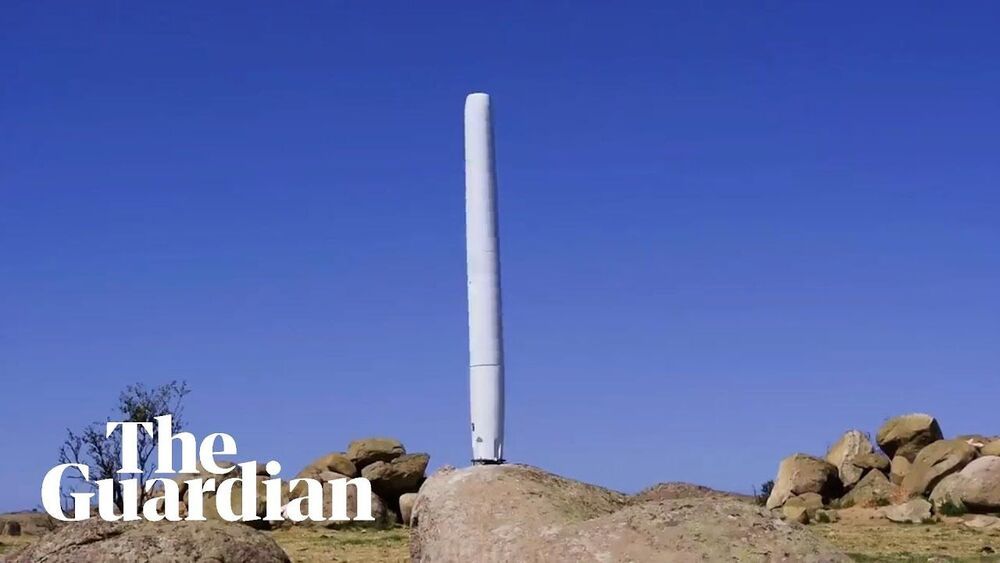Mar 17, 2021
Good vibrations: bladeless turbines could bring wind power to your home
Posted by Quinn Sena in category: energy
‘Skybrators’ generate clean energy without environmental impact of large windfarms, say green pioneers.

‘Skybrators’ generate clean energy without environmental impact of large windfarms, say green pioneers.
In physics, entropy is the process of a system losing energy and dissolving into chaos. This applies to social systems in everyday life, too. Limiting energy loss can make social systems run better.
I didn’t get my 2nd Moderna Vaccine because how sick others became after theirs — nausea, fatigue, headaches for days, lymph nodes the size of a rock that fits in your hand, increased heart rate… Recently a Utah woman died 4 days after her 2nd vaccine-her heart, liver and kidneys failed. Less then a yr ago I read several studies on hospitalized COVID patients — how their kidneys and liver were failing. I read a recent study on how post COVID individuals are now having heart issues. Another study shows how COVID attacks the heart and why such individuals are now having heart issues. In December 2020, 13 individuals died after getting vaccinated (probably more since then). There is a real connection between COVID and organ failure!!!! I wish I kept links of all the information I read. Be happy to find them again. We don’t even know the long term affects of the vaccine — are the vaccinated going to experience long term health issues as well? Take your chances with a vaccine, or not.
A Utah woman in her 30s died four days after receiving the coronavirus vaccine.
Kassidi Kurill, 39, was healthy and happy and “had more energy” than others, according to a KUTV report. Then, four days after she received her second dose of the coronavirus vaccine, she suddenly died.
A multi-institutional team of researchers has found that it is possible to use a type of fungus to soften wood to the point that it could be used to generate electricity. In their paper published in the journal Science Advances, the group describes their process and how they tested it.
As the world works its way toward cleaner energy-producing systems, scientists seek novel approaches to producing electricity. One possibility is the use of piezoelectric devices that generate electricity by harnessing movement such as footsteps. In this new effort, the researchers have noted that much energy is wasted when people walk around. And while some have attempted to harness some of that energy with devices designed for shoes or legs, the researchers with this new effort wondered if it might be possible to add piezoelectrics to the floor to make use of that energy.
In studying the kinds of wood that are used to make floors, particularly in homes, the researchers noted that they do not have much give—a necessary component of an energy-harvesting system. To solve that problem, they found that applying a type of white rot fungus to pieces of balsa wood for a few weeks sped up the decaying process in a useful way. It made the wood spongier, which translated to give. When stepping on the wood, the researchers could feel it depress. They also found that after the wood returned to its former shape when pressure was removed.
Pinning plasma within a set of magnetic fields offers physicists a new way to study clean energy, space weather and the inner workings of stars.
A new laser thruster could be a step towards new technology to push satellites rapidly between planets.
The demonstration model of the Photonic Laser Thruster (PLT) moved a 750-gram mock satellite along a track in the laboratory using only the power of light.
Belgian company Turbulent have created a water-powered turbine that could be used to bring energy to off-grid rural areas.
Experts say the potential for rapid transformation of the world’s energy system has a parallel in the speed with which cars replaced horses in the 1900s.
Critics of renewable energy often cite two reasons for why they think a transition from fossil fuels will take half a century. Firstly, that sources of renewable energy are too intermittent to be reliable and secondly, that governments cannot bear the costs of switching entire economies to clean energy.